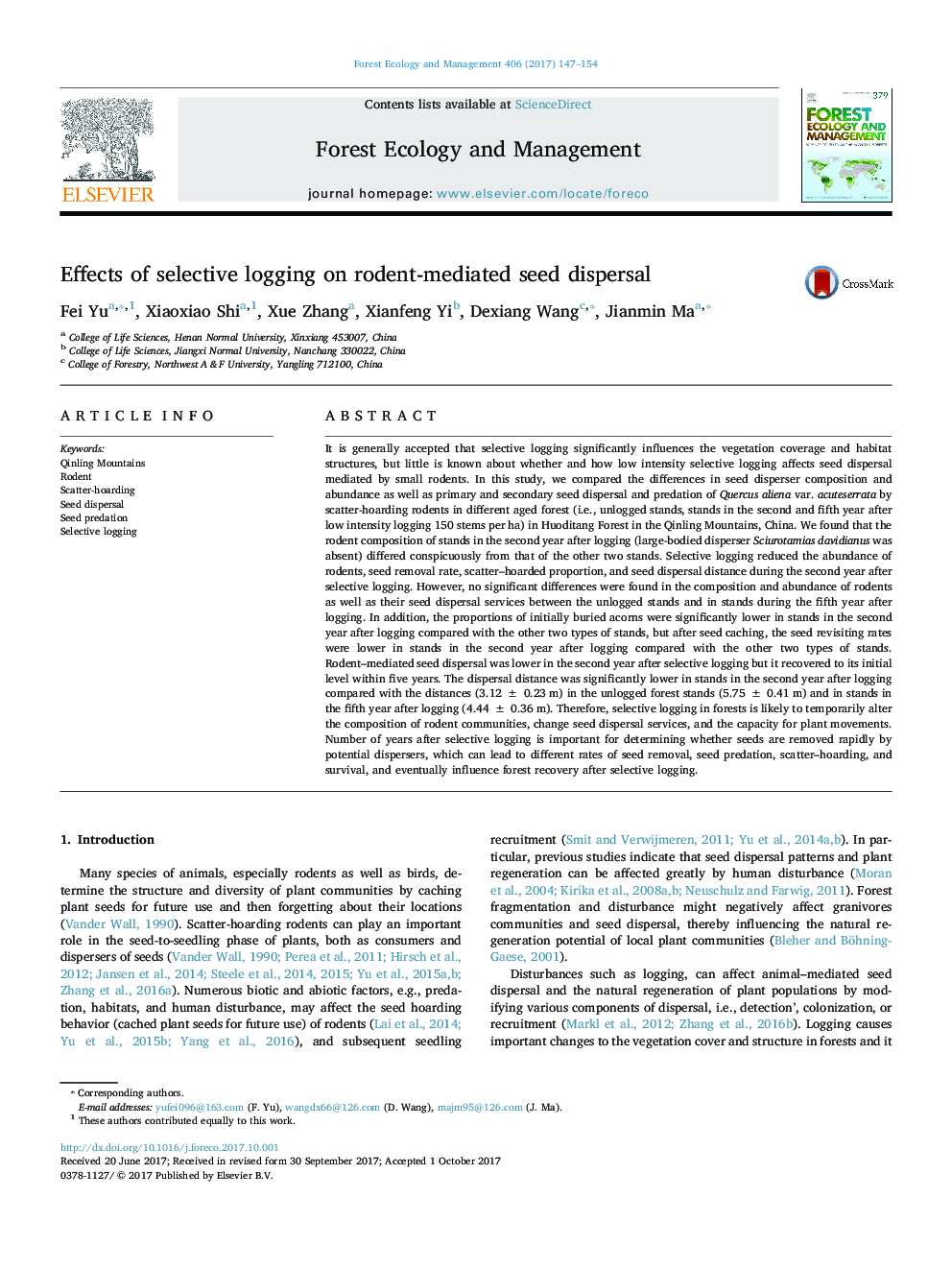| کد مقاله | کد نشریه | سال انتشار | مقاله انگلیسی | نسخه تمام متن |
|---|---|---|---|---|
| 6458995 | 1421352 | 2017 | 8 صفحه PDF | دانلود رایگان |
• We investigated how selective logging affects rodent-mediated seed dispersal.
• Selective logging altered the abundance of small rodents and reduced their dispersal services.
• The effects of selective logging on seed dispersal were temporary and time-dependent.
• Seed dispersal services by rodents recovered following several logging years.
It is generally accepted that selective logging significantly influences the vegetation coverage and habitat structures, but little is known about whether and how low intensity selective logging affects seed dispersal mediated by small rodents. In this study, we compared the differences in seed disperser composition and abundance as well as primary and secondary seed dispersal and predation of Quercus aliena var. acuteserrata by scatter-hoarding rodents in different aged forest (i.e., unlogged stands, stands in the second and fifth year after low intensity logging 150 stems per ha) in Huoditang Forest in the Qinling Mountains, China. We found that the rodent composition of stands in the second year after logging (large-bodied disperser Sciurotamias davidianus was absent) differed conspicuously from that of the other two stands. Selective logging reduced the abundance of rodents, seed removal rate, scatter–hoarded proportion, and seed dispersal distance during the second year after selective logging. However, no significant differences were found in the composition and abundance of rodents as well as their seed dispersal services between the unlogged stands and in stands during the fifth year after logging. In addition, the proportions of initially buried acorns were significantly lower in stands in the second year after logging compared with the other two types of stands, but after seed caching, the seed revisiting rates were lower in stands in the second year after logging compared with the other two types of stands. Rodent–mediated seed dispersal was lower in the second year after selective logging but it recovered to its initial level within five years. The dispersal distance was significantly lower in stands in the second year after logging compared with the distances (3.12 ± 0.23 m) in the unlogged forest stands (5.75 ± 0.41 m) and in stands in the fifth year after logging (4.44 ± 0.36 m). Therefore, selective logging in forests is likely to temporarily alter the composition of rodent communities, change seed dispersal services, and the capacity for plant movements. Number of years after selective logging is important for determining whether seeds are removed rapidly by potential dispersers, which can lead to different rates of seed removal, seed predation, scatter–hoarding, and survival, and eventually influence forest recovery after selective logging.
Journal: Forest Ecology and Management - Volume 406, 15 December 2017, Pages 147–154
